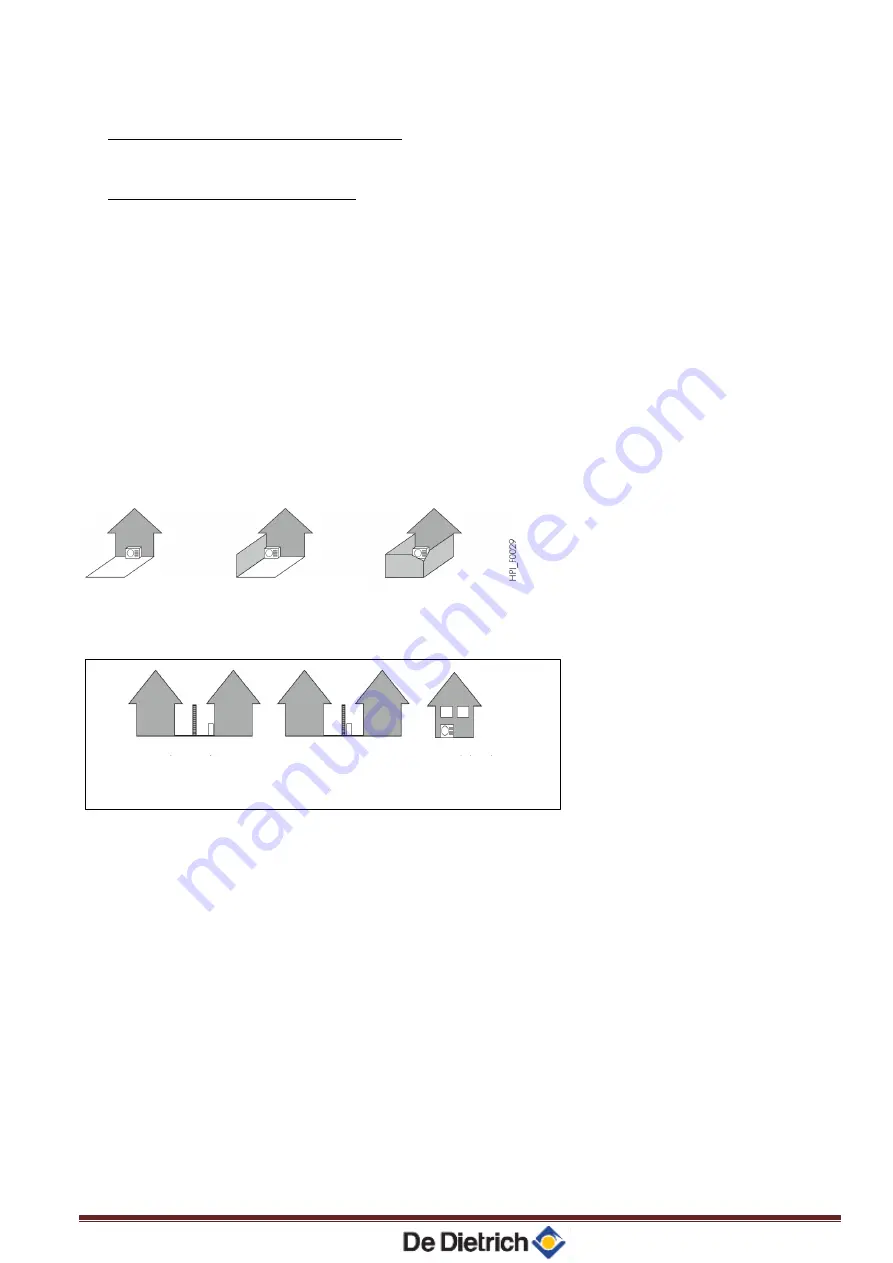
20181270 CR v8-2019Page 54
Acoustic integration of air conditioners
Definitions:
The acoustic performance of the following outdoor units:
-
Acoustic performance Lw expressed in dBA:
It characterises the noise emission capacity of the source independently of its environment. It allows the
appliances to be compared.
-
Sound pressure Lp expressed in dBA:
This is the value perceived by the human ear, and depends on parameters such as the distance from the
source, the size and the type of walls in the building. The regulations are based on this value
Noise nuisance:
Regulations concerning neighbourhood noise can be found in the decree of 31/08/2006 and in standard NF S 31-010.
Noise nuisance is defined by the emergence, which is the difference between the sound pressure level measured
when the appliance is switched off and the level measured when the appliance is operating in the same location.
The maximum authorised difference is:
-
Day (7 am - 10 pm): 5 dB(A)
-
Night (10 pm - 7 am): 3 dB(A)
Recommendations for acoustic integration of the outdoor module:
Do not place it close to where people sleep.
Avoid placing it close to a terrace, and do not install the module opposite a wall. The increase in the noise level due to
the installation configuration is shown in the diagrams below:
The layouts shown below are forbidden:
To limit noise nuisance and the transmission of vibrations, we recommend:
-
Installing the outdoor module on a metal frame or an inertia base. This base must weigh at least twice as
much as the module, and it must be separate from the building. In all cases, anti-vibration mounts must be
installed to reduce the transmission of vibrations.
-
The use of suitable sleeves for routing refrigerant connections through walls.
-
The use of flexible, anti-vibration materials for mountings.
-
The installation on refrigerant connections of vibration damping devices such as loops, bends or elbows.
It is also recommended to install an acoustic attenuation device, for example:
-
Sound-absorbent wall material to be installed on the wall behind the module.
-
A sound barrier: the surface of the barrier must be a sound barrier: the surface of the barrier must be
positioned as close as possible to it, while allowing air to circulate freely. The barrier must be made from a
suitable material such as acoustic bricks, concrete blocks covered with absorbent material. It is also possible
to use natural barriers, such as banks of earth.
Maintenance of Wall-mounted indoor units
Module positioned
against a wall: + 3 dB(A)
Module positioned in a
corner: + 6 dB(A)
Module positioned in an
inner courtyard: + 9 dB(A)
Ventilation directed
towards the
neighbouring property
Module at the
property boundary
Module positioned
under a window






































